|
|
British/English Ships with Sails
|
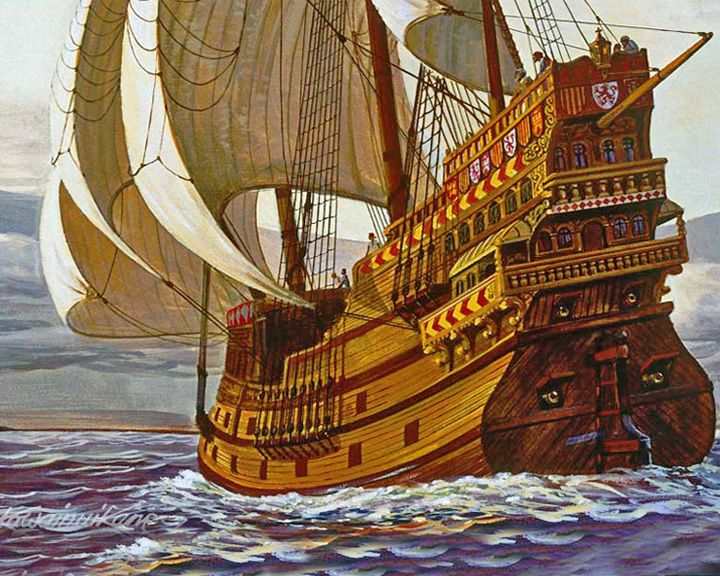 (Another (Another Ark Royal, HMS — English galleon English flagship that fought against the Spanish Armada. During the reign of James VI and I, she was renamed Anne Royal. Several British aircraft carriers have been named Ark Royal. LAUNCHED: 1587 → FATE: Accidentally sunk in April of 1636; raised and broken up in 1638. |
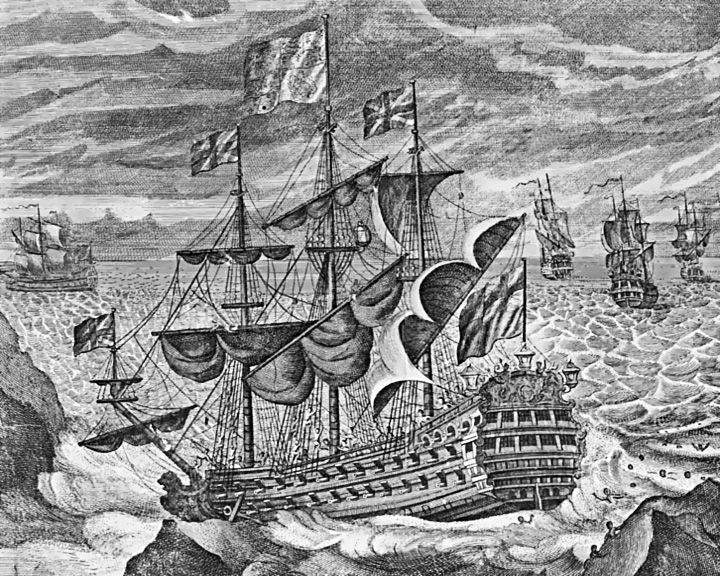 Association, HMS — British second-rate ship of the line After serving with distinction at the capture of Gibraltar, she ended up lost in a storm and wrecked with 3 other ships with the loss of nearly 2,000 lives. The rediscovery of the Association and so many historical artefacts led to legislation such as the Protection of Wrecks Act to preserve British historic wreck sites. LAUNCHED: 1697 → FATE: Wrecked of the Isles of Scilly October 22, 1707. |
 Beagle, HMS — English sloop, or brig-sloop, two-masted She carried Charles Darwin on his historic expedition beginning in 1831. Robert FitzRoy was captain during the historic round-the-world trip. In 1845 the Beagle was refitted as a static coast guard watch vessel. LAUNCHED: 1820, May 18 → FATE: Sold for scrap in 1870. |
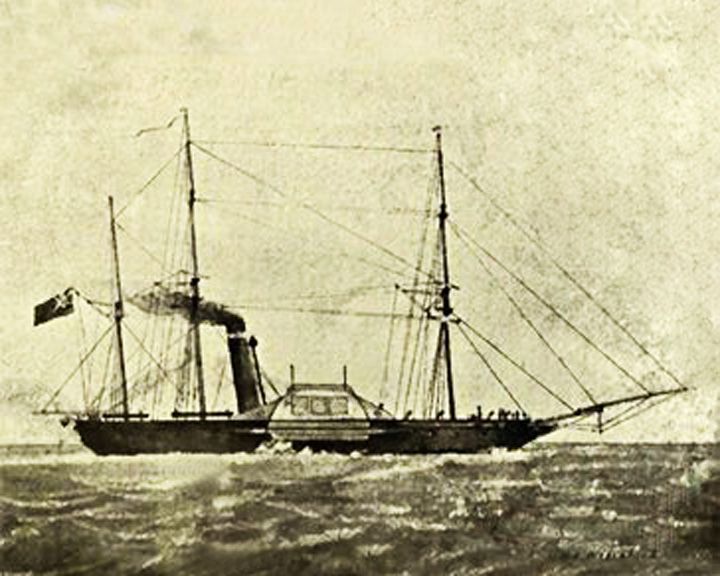 (Another (Another Birkenhead, HMS — British frigate, steamer The protocol "women and children first" originated on this sinking ship. Only 193 of the 643 people on board survived. Over the years, numerous attempts have been made to salvage the gold thought on board. LAUNCHED: 1845, December 18 → FATE: Struck a hidden reef and sank February 26, 1852. |
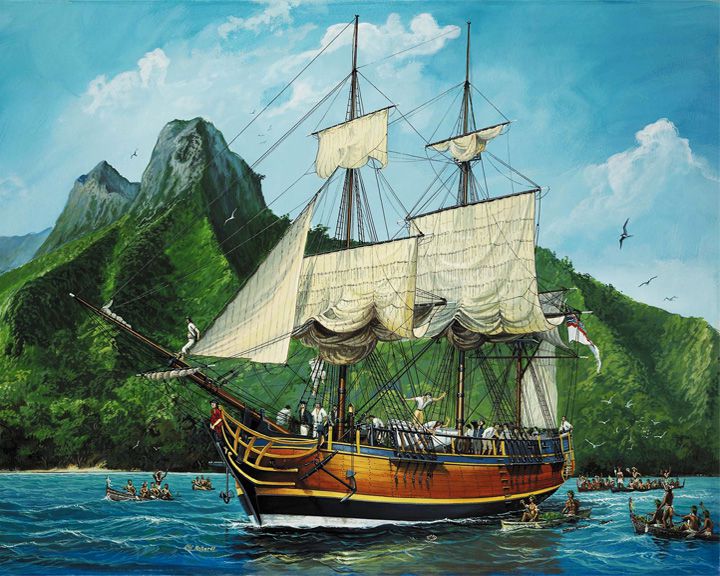 Bounty, HMS — English collier, three-mast Mutiny aboard ship, April 28, 1789, led by Fletcher Christian against Captain William Bligh. Its mission was to pick up breadfruit plants from Tahiti and transport them to the West Indies. The mutiny was dramatized in several books and movies. LAUNCHED: 1784 → FATE: Was burned by the mutineers on January 23, 1790. |
 (Another (Another Challenger, HMS — British corvette; steam-assisted Undertook the first global marine research expedition. She was the flagship of the Australia Station between 1866 and 1870. LAUNCHED: 1858, February 18 → FATE: Broken up for her copper end in England in January, 1921. |
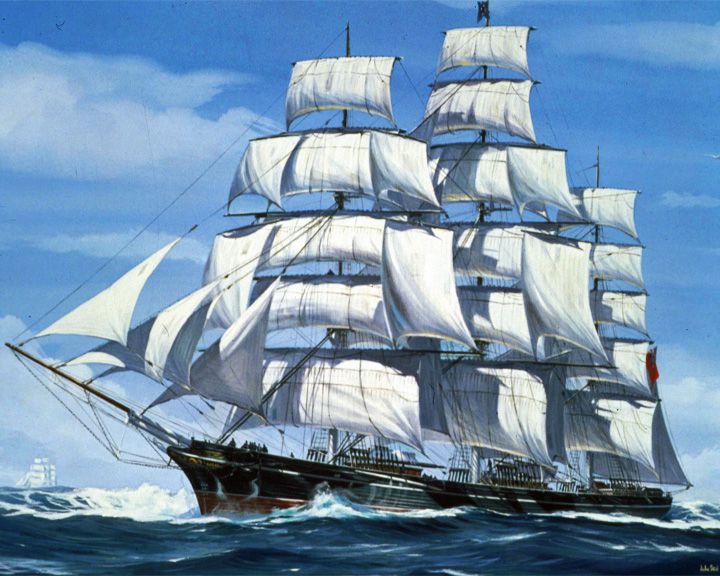 Champion of the Seas — English clipper ship On her maiden voyage, she set a record for the fastest run in 24 hours of 465 nautical miles or 861 km. She was the passenger ship built for the run from Liverpool, England to Melbourne, Australia. LAUNCHED: 1854, April 18 → FATE: Abandoned off Cape Horn in leaking condition in 1877. |


|
Page 2
|
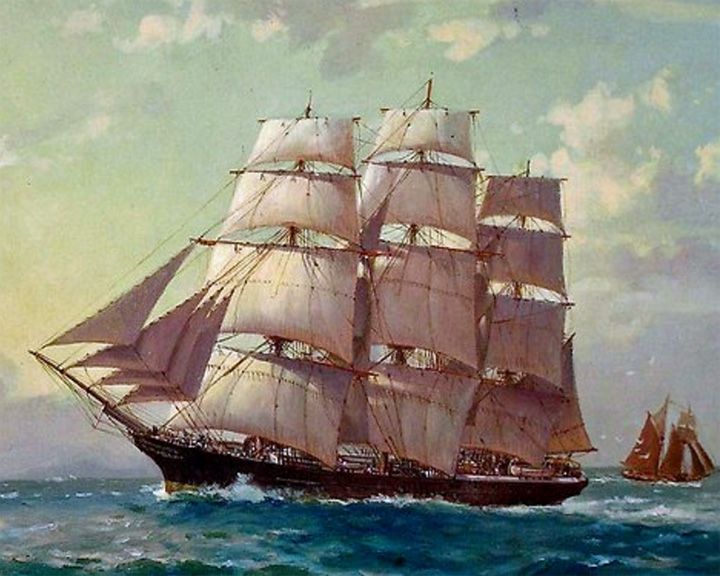 City of Adelaide — English clipper ship The world's oldest surviving clipper ship. From 1864 to 1887, she played an important part in the immigration of Australia. She is now part of the National Historic Ships of the United Kingdom. LAUNCHED: 1864, May 18 → FATE: Out of service since 1948, current being restored. |
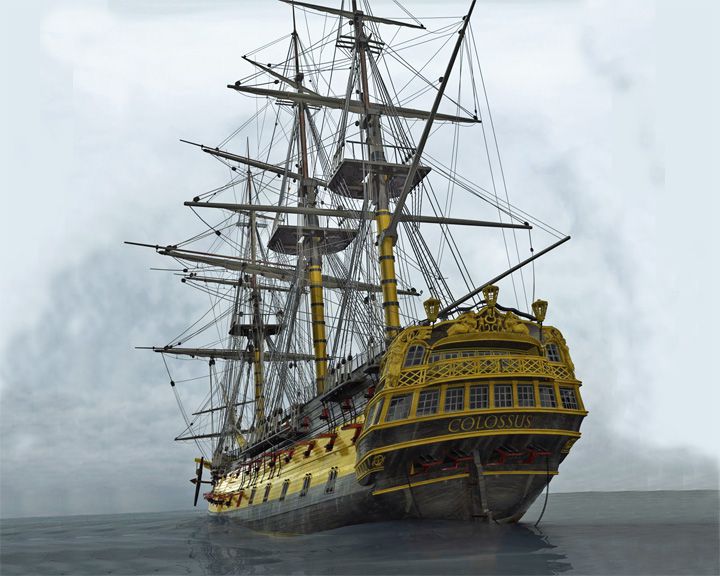 Colossus, HMS — British third-rate ship of the line After many battles and much glory, she lost her way and ran aground and sunk with one fatality. In 1974, fragments from the Colossus were discovered and reconstructed and are now displayed at the British Museum in London. LAUNCHED: 1787, April → FATE: Wrecked of the Isles of Scilly December 10, 1798. |
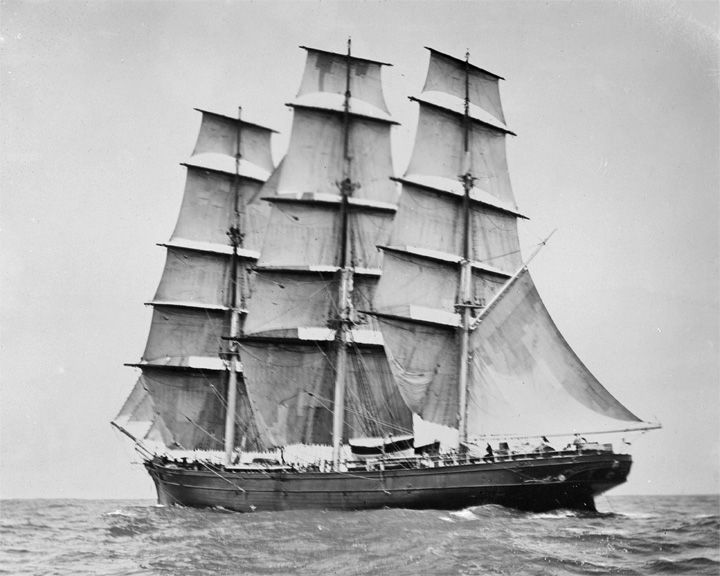 (Another (Another Cutty Sark — English clipper ship Lost China-to-London race to ship called Thermopylae. She is one of three remaining original composite construction (wooden hull on an iron frame) clipper ships from the nineteenth century. LAUNCHED: 1869, November 18 → FATE: Now preserved in dry dock in Greenwich, England. |
 Discovery — British three-masted barque The ship that carried Scott and Shackleton on their first successful journey to the Antarctic. She was locked in the ice of the Antarctic for two years. The ship was eventually freed in February, 1904 by the use of controlled explosives. LAUNCHED: 1901, March 18 → FATE: Museum ship in Dundee, Scotland. |
 Driver, HMS — British side-wheeler paddle sloop First steamship to circumnavigation the globe. She was the first steamship to visit New Zealand, arriving January 1846, and was involved in the New Zealand Wars. LAUNCHED: 1840, December 18 → FATE: Wrecked on Mayaguana Island on August 3,1861. |
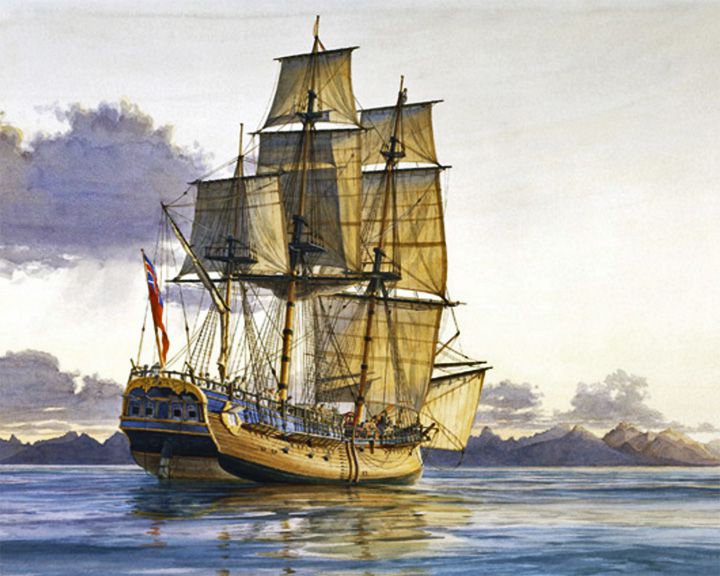 (Another (Another Endeavour, HMS — British collier, three-masted; refitted in 1768 for the expedition James Cook's ship during his voyage to explore the Pacific Ocean and Terra Australis Incognita. She became the first ship to reach the east coast of Australia at Botany Bay in April 1770, and went on to circumnavigate the world. LAUNCHED: 1764, June → FATE: Later renamed Lord Sandwich. Scuttled in a blockade of Narragansett Bay, Rhode Island, in 1778. |
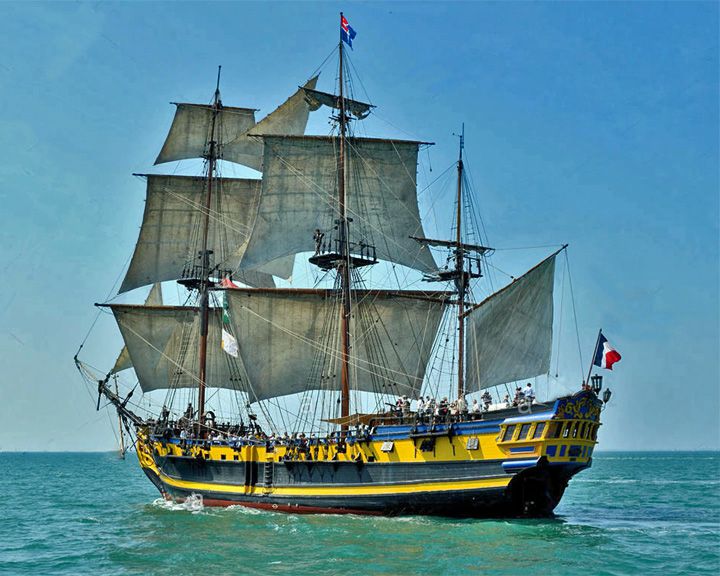 Etoile du Roy — British frigate, sixth-rate Stand-in for several different ships for the British TV series Horatio Hornblower, 1998-2003. The three-masted frigate was built specifically to represent a generic Nelson-age warship, with her design inspired by HMS Blandford built in 1741. LAUNCHED: 1997, September → FATE: Sold to a French company and now on exhibit at Saint-Malo, Brittany. |
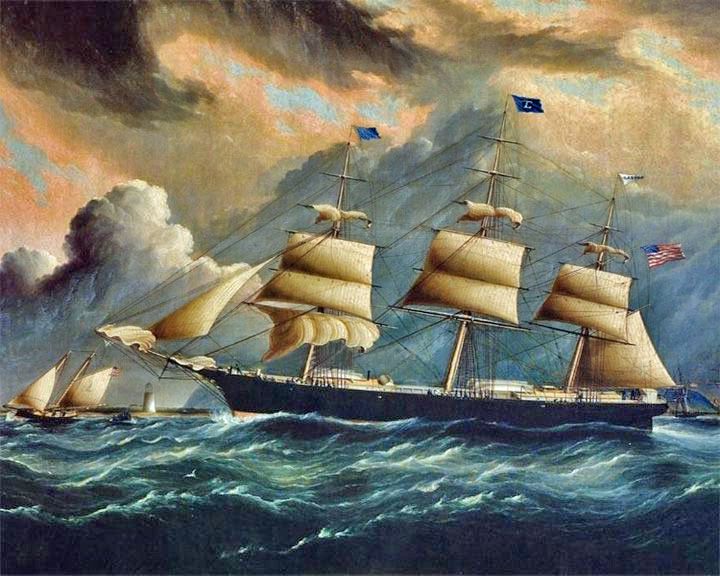 (Another (Another Gaspée — English single-masted sloop-of-war, used as a fast revenue cutter Subject of the "Gaspée Affair," the torching of the ship by a group of American colonialists, leading up to the American Revolution. The city of Warwick, RI commemorates the Gaspée Affair with a festival and parade, including burning the Gaspée in effigy. LAUNCHED: 1764, January → FATE: Looted and burned in Narragansett Bay June 9, 1772. |
|
Page 3
|
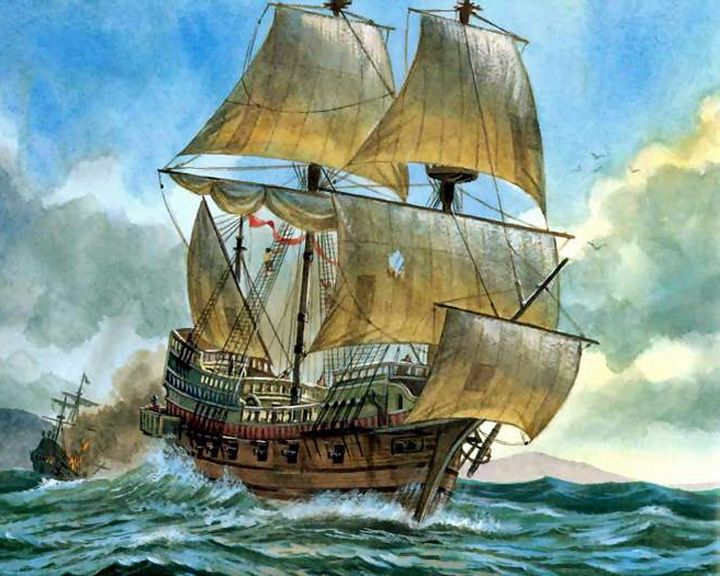 Golden Hind — English galleon Second ship to circumnavigation of the globe between 1577 and 1580, captained by Sir Francis Drake. Several replicas were built, the latest the Golden Hinde lauched in 1973. LAUNCHED: 1576, probably → FATE: In dry dock at Deptford, England as a museum piece, rotted away after decades around 1650. |
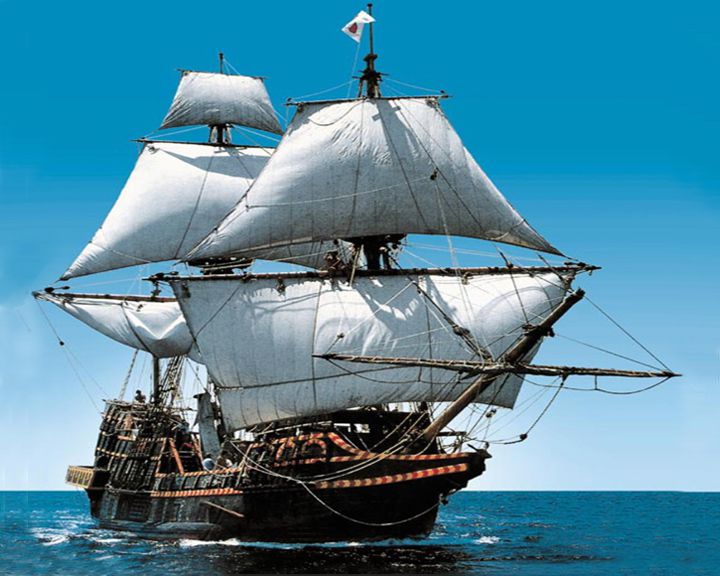 Golden Hinde — English galleon A full-size replica of the 1577 Golden Hind and appeared in several movies. She has travelled a distance equal to more than five times around the globe. Like Francis Drake's ship, she has circumnavigated the globe. LAUNCHED: 1973 → FATE: Since 1996 she has been berthed at St Mary Overie Dock, Southwark, London. |
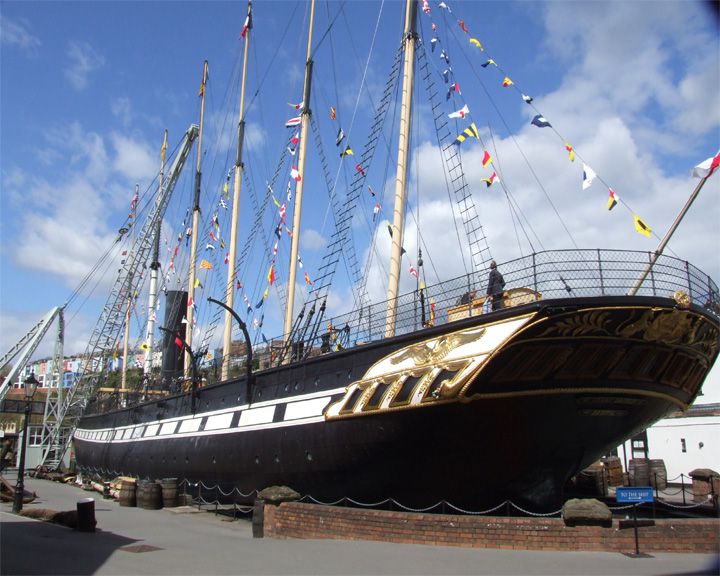 (Another (Another Great Britain, SS — British steamship, passenger ship First steamer to cross the Atlantic. Also first built of iron and with a screw propeller. She ran aground in 1846 and was sold for salvage, repaired and revised. In 1881 she was converted to sail. In 1937 she was retired and scuttled. In 1970 she was recovered and eventually restored as a museum ship. LAUNCHED: 1845, July 18 → FATE: Now a museum ship in Bristol Harbour. |
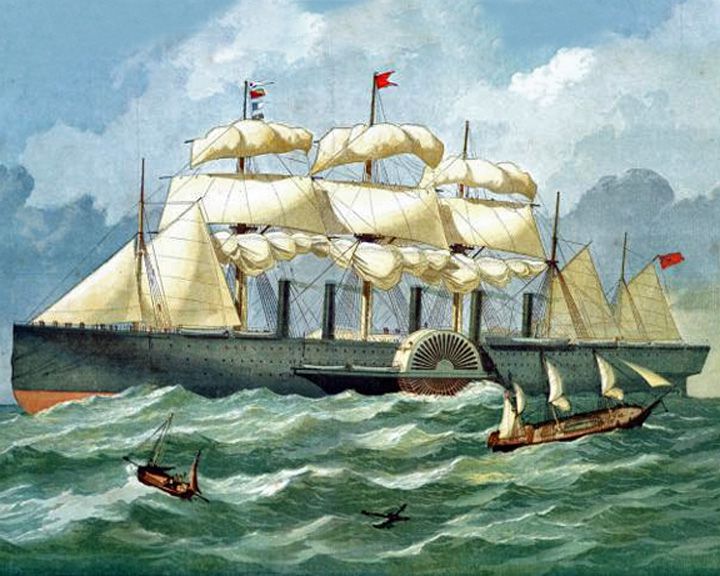 (Another (Another Great Eastern, SS — British iron paddle steamboat, side-wheeler with sails The world's largest steamship; successfully laid cable across the Atlantic Ocean. She completed 45 crossings in eight years; then she was used for carrying mail, then troops. LAUNCHED: 1858, January 18 → FATE: Broken up for scrap at Rock Ferry on the River Mersey in 1889. |
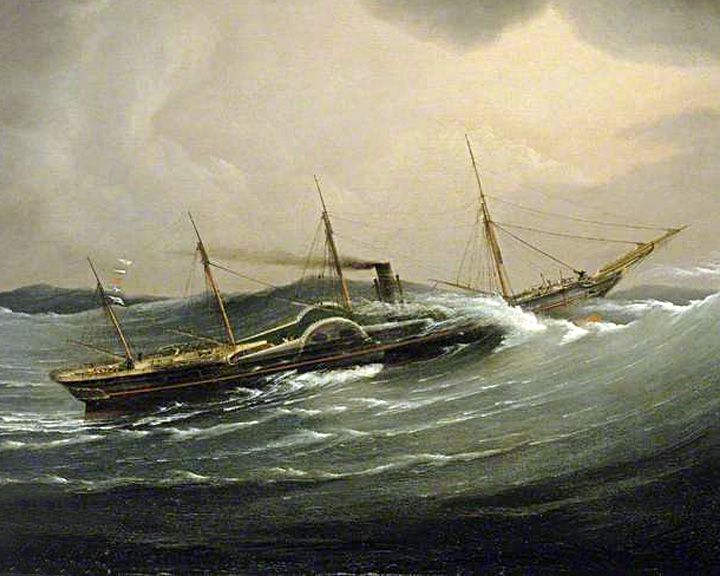 Great Western, SS — British paddle steamboat, side-wheeler First paddle ship built for crossing the Atlantic; completed the crossing in April of 1838. In later years, she was used as a showboat, a floating palace/concert hall and gymnasium. LAUNCHED: 1837, July 18 → FATE: Taken out of service December of 1846, she was broken up in 1856. |
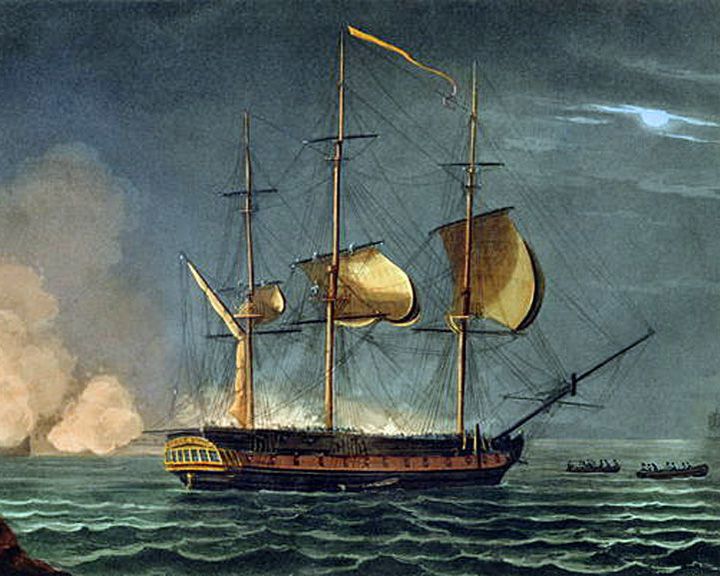 Hermione, HMS — British frigate, fifth-rate Notorious for having the bloodiest mutiny in British naval history. Mutineers gave her to the Spaniards in 1797 who put her in service as Santa Cecilia. She was retaken by the British in 1799 and renamed the Retaliation. LAUNCHED: 1782, September → FATE: Broken up at Deptford in June 1805. |
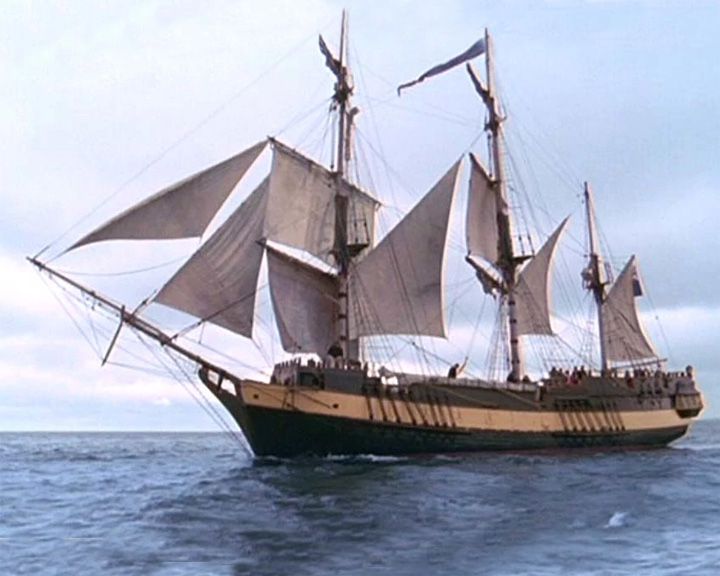 Hotspur, HMS — British sloop-of-war Ship of Horatio Hornblower in the book series and British TV series Hornblower and the Hotspur by C. S. Forester. In the TV series, she is captured by the French. After Hornblower and the crew later discover the ship, they succeed in retaking it. LAUNCHED: 1962, for the book; 1988 2003 for the TV series → FATE: Unknown. |
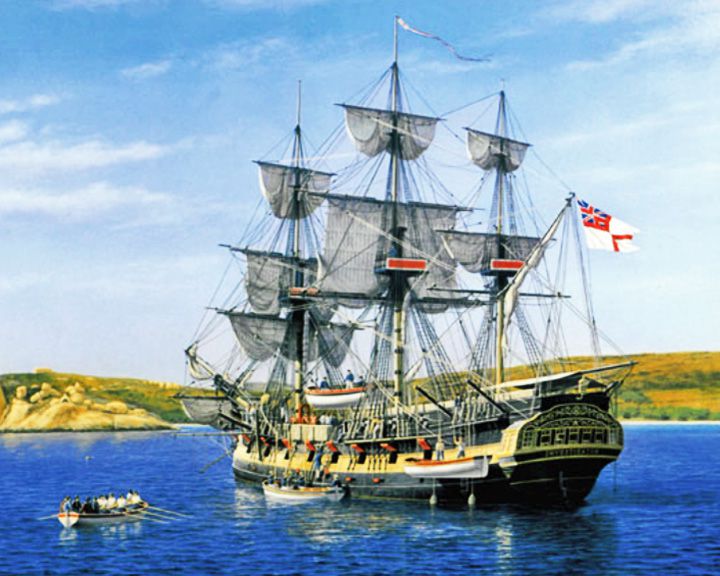 Investigator, HMS — British collier, then in 1801 converted to a survey ship. The first ship to circumnavigate Australia. The Royal Navy sold her in 1810 and she returned to mercantile service under the name Xenophon. LAUNCHED: 1795 → FATE: Broken up about 1872. |
|
Page 4
|
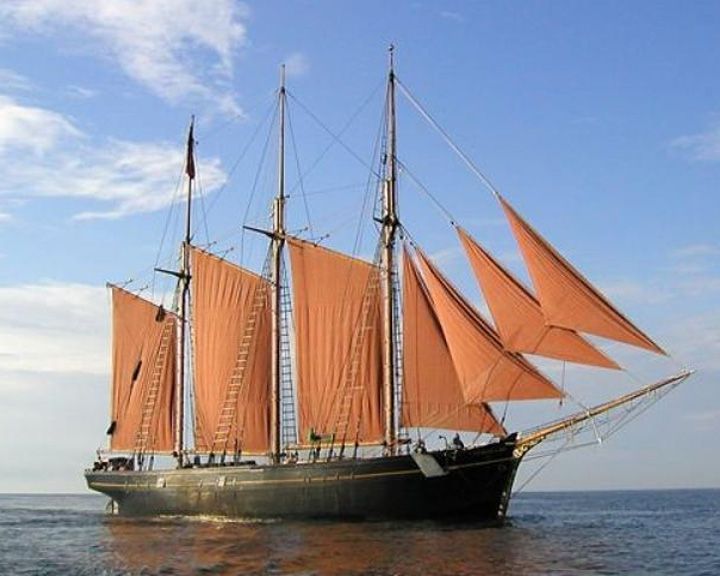 Kathleen and May — British three masted schooner Last remaining British built wooden hull three-masted top sail schooner. Originally equipped with the first known fitting of Appledore roller reefing. After years of service, during restoration in 2000, 70% of the original planking was stripped from the frames, enabling most of her internal timbers to later be refitted. LAUNCHED: 1900, April → FATE: Restored and based in Bideford on the River Torridge. |
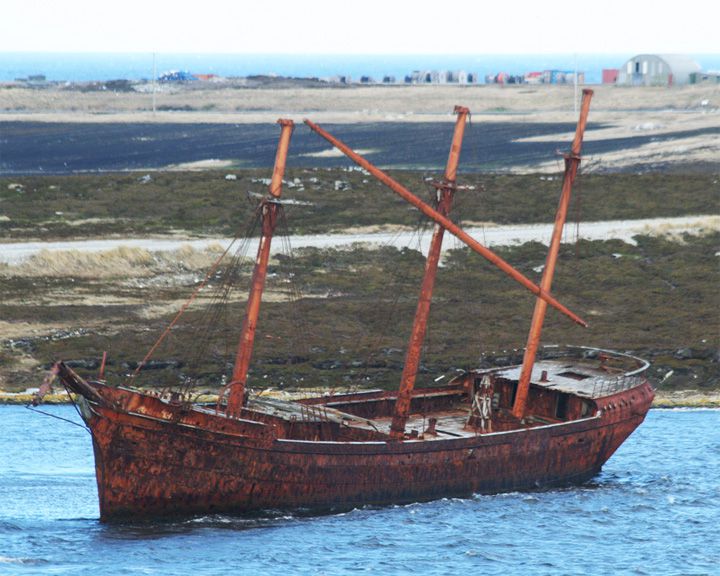 (Another (Another Lady Elizabeth — British 3-masted iron barque The hulk of the ship is the only semi-intact hulk left in the harbours of the Falkland Island. After being condemned in 1913, she served as a timber warehouse alongside the East Jetty. In February 1936 she broke her moorings in a storm and drifted to her present location. LAUNCHED: 1879, June 6 → FATE: Her remains now lie at the bottom of Whale Bone Cove harbour, Stanley, Falkland Islands. |
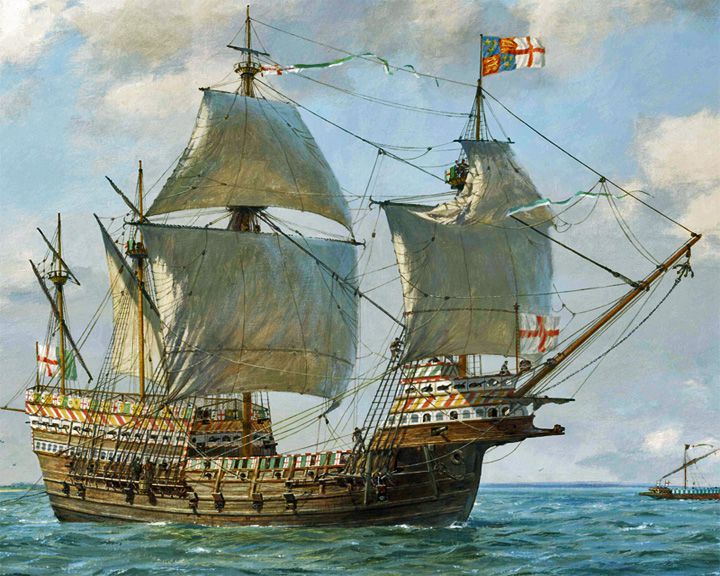 Mary Rose — English carrack-type warship One of the earliest ships built for war sporting the innovation of gun ports. The wreck of the Mary Rose was rediscovered in 1971 and salvaged in 1982. LAUNCHED: 1512 → FATE: Sank in the straits north of the Isle of Wight, 1545. |
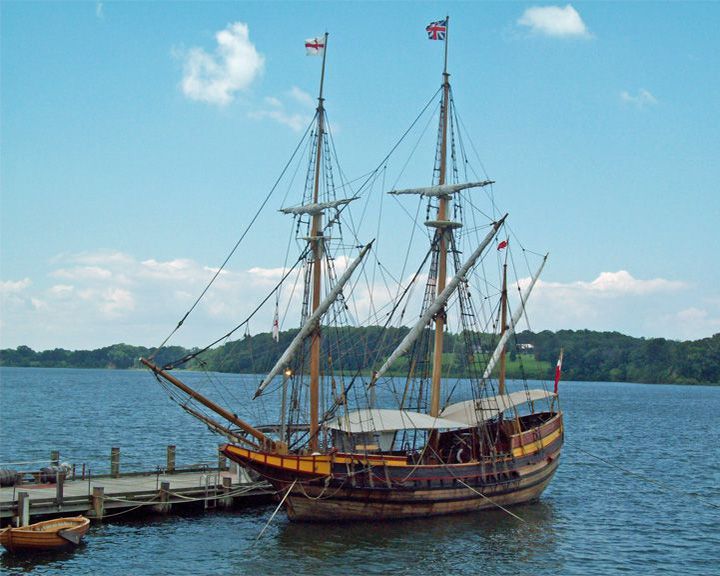 Maryland Dove — American merchant vessel Replica of the Dove, one of two early 17th-century English ship that, in 1634, brought the first settlers to what is now Maryland. The original Dove was the smaller of the two ship, used in shallow waterways along the coast. The accompanied ship with 140 passengers was the Ark. LAUNCHED: 1978, August 18 → FATE: On exhibit at Historic St. Mary's City and occasionally other ports. |
 Matthew — English caravel Sailed by John Cabot, first European to reach North America. Apparently, she was a small ship of fifty tons carrying twenty men and food for seven or eight months. LAUNCHED: 1496, or earlier; replica launched 1996 → FATE: Original ship, unknown; replica on display at M Shed Museum, Bristol, England. |
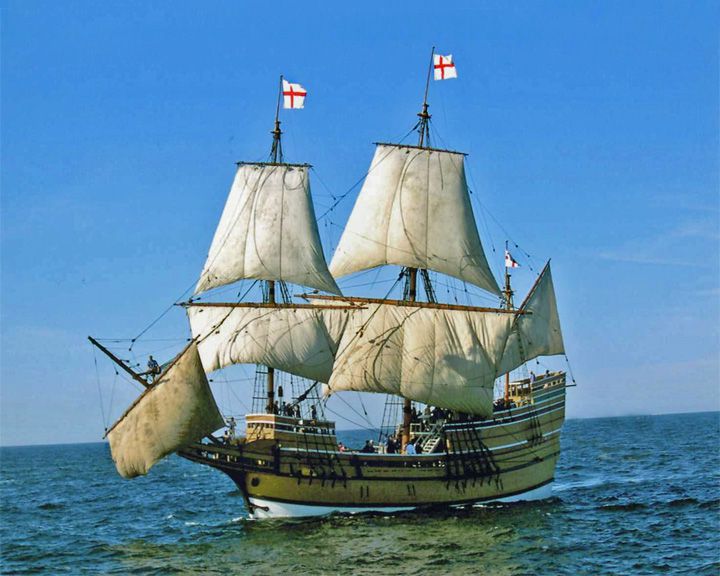 Mayflower — English galleon Transported the English Pilgrims from England to Plymouth, Massachusetts in 1620. The ocean crossing took 66 days. A second ship called the Mayflower made a voyage from London to Plymouth Colony in 1629. LAUNCHED: 1607, about → FATE: Sold and taken apart in May of 1624. |
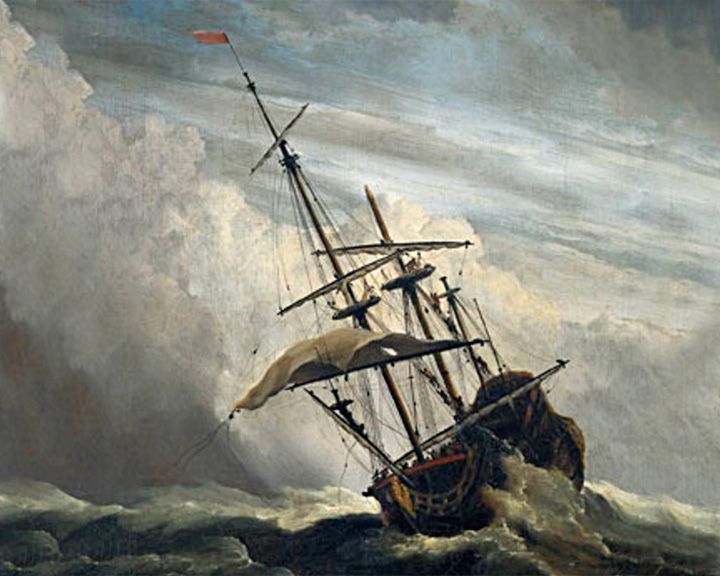 Merchant Royal — English merchant ship Lost at sea with 18 men off Land's End, Cornwall, England, the ship is one of the richest sunken treasures. Lost were more than half million Spanish silver pesos, 500 bars of gold and ingots of silver, and hundreds of pieces of jewelry. LAUNCHED: 1627 → FATE: Sank in bad weather September 23, 1641. |
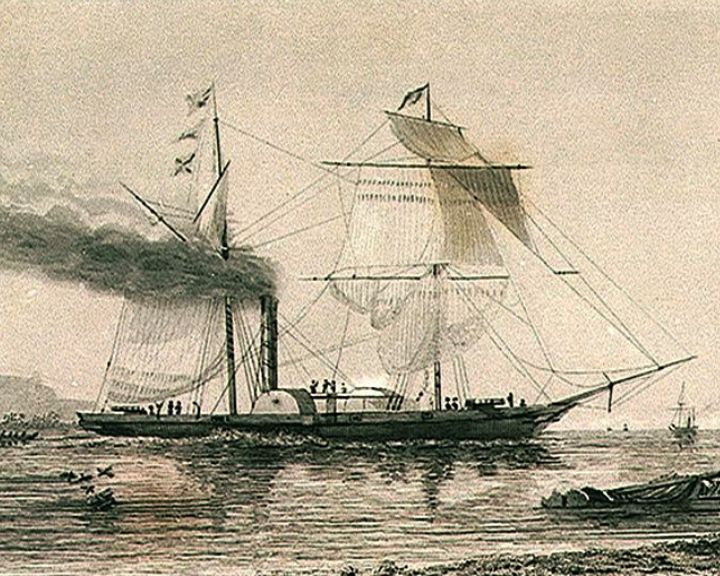 Nemesis — British steam and sail powered warship The first British ocean-going iron warship; also the first iron ship to sail around the Cape of Good Hope. She was greatly effective in the First Opium War. The Chinese referred to her as the "devil ship". LAUNCHED: 1839 → FATE: Ended up in Calcutta, 1855. |
|
Page 5
|
 President, SS — British paddle steamship, with sails; ocean-going First steamship lost at sea on a transatlantic run, taking with her all 136 on board. Constructed with a third deck on top of the hull and designed with luxurious staterooms, she was top heavy and rolled excessively. LAUNCHED: 1840, August → FATE: Lost during a gale off Nantucket Shoals March of 1841. |
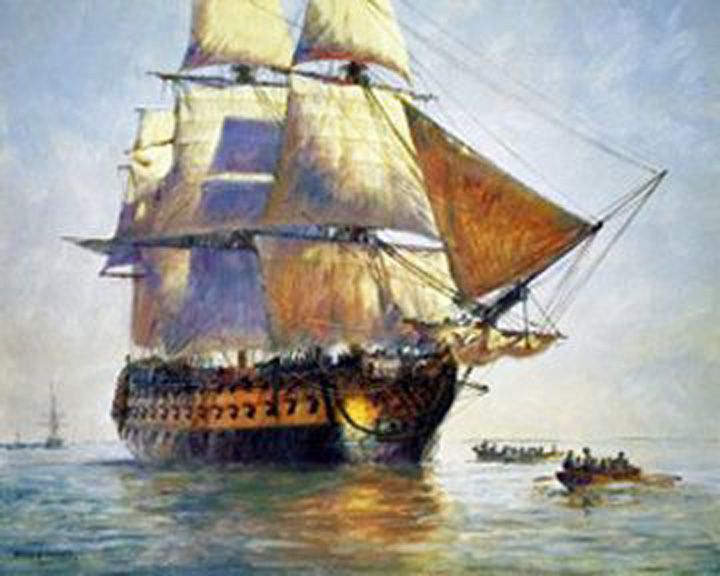 (Another (Another Queen Anne's Revenge — English sloop Flagship of pirate Blackbeard (Edward Thatch). As Conccord was captured by the French in 1711, and then as La Concord she was taken by pirates in 1717. LAUNCHED: 1710 → FATE: Run aground near Beaufort Inlet, North Carolina in May, 1718. |
 Resolution, HMS — British Collier The first ship to cross the Antarctic Circle reaching beyond latitude 71 degrees south. She was the ship on which Captain James Cook made his second and third voyages of exploration in the Pacific. LAUNCHED: 1770 → FATE: Taken by the French June 10, 1782, renamed La Liberté and ended up rotting in Narragansett Bay not far from Cook's other ship, Endeavour. |
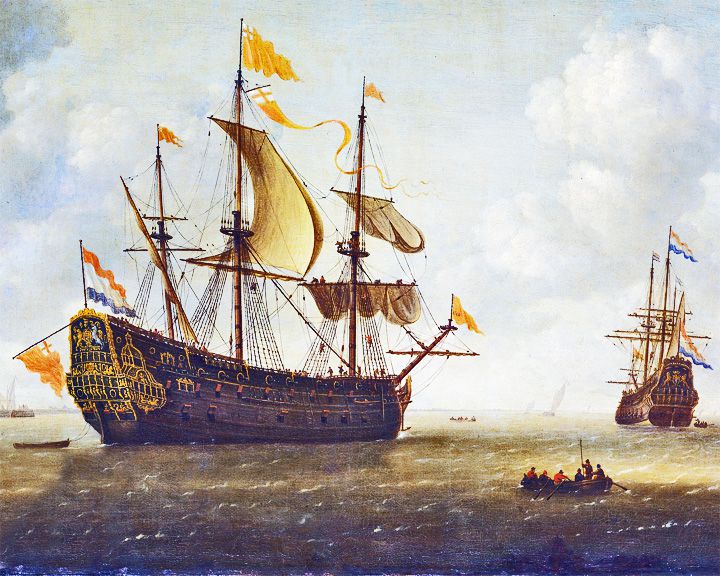 Royal Charles, HMS — British first-rate three-decker ship of the line During the English Restoration, she brought Charles II and his entourage from the Dutch Republic to England to reclaim his crown. At 1,229 tons, she was larger than Sovereign of the Seas, the first three-deck ship of the line. LAUNCHED: 1655, April 18 → FATE: Sold for scrap in 1673 by Dutch navy. |
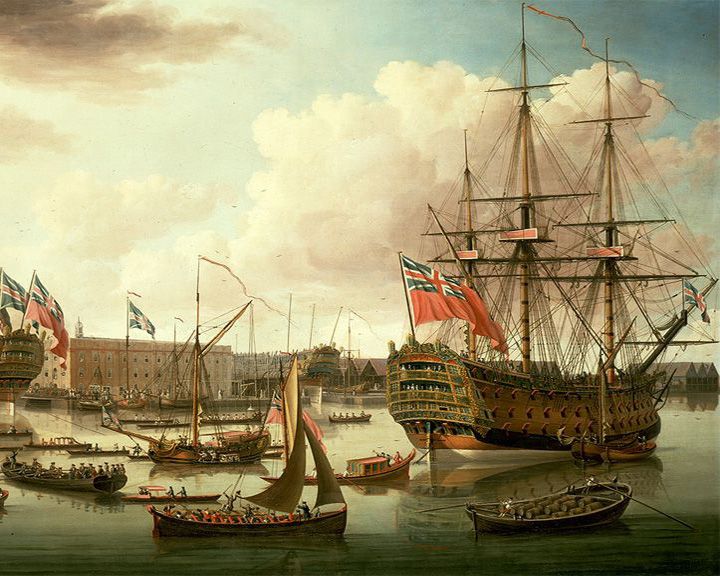 Royal George, HMS — English first-rate ship of the line One of the most serious maritime losses to occur in British water, sinking while undergoing routine maintenance taking more than 800 lives. She was the largest warship in the world at the time of launching. LAUNCHED: 1756, February 18 → FATE: Sank while anchored off Portsmouth August 29, 1782. |
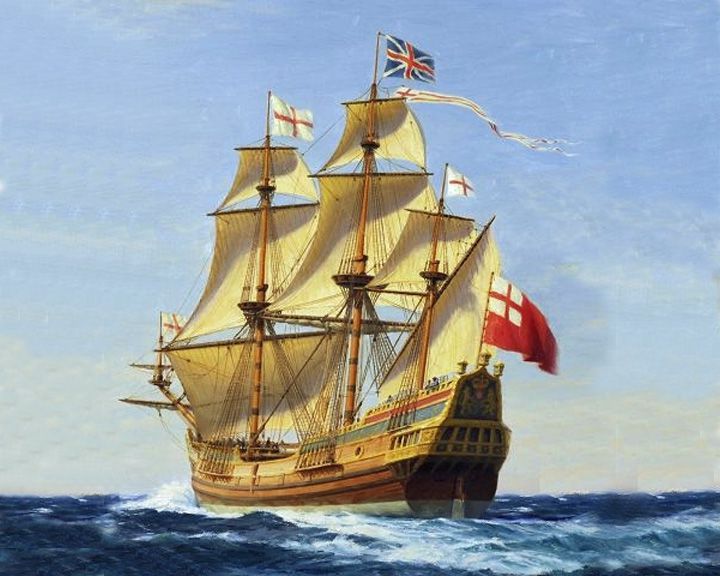 Sea Venture — English merchant ship; purpose-built First dedicated emigration ship as part of the Third Supply mission to the Jamestown Colony. During the storm, massive leaks developed because of faulty construction. All 150 people aboard and one dog made it to shore safely. LAUNCHED: 1609 → FATE: Damaged in a hurricane and scuttled at Discovery Bay, June 1609. |
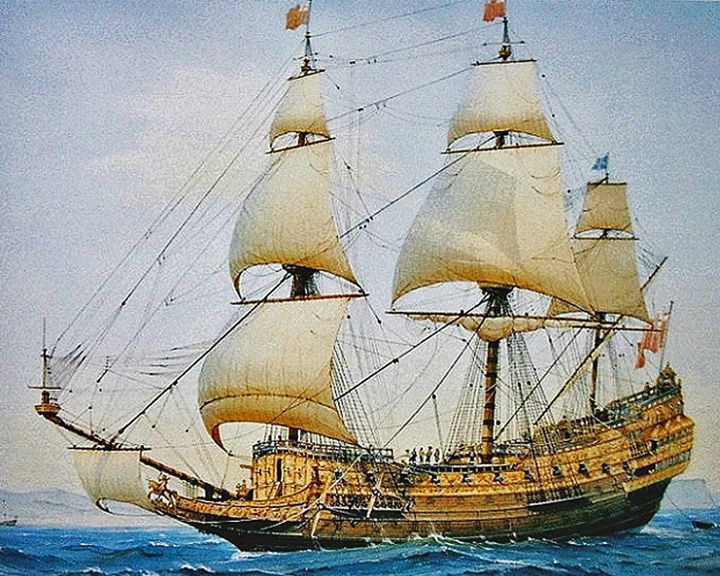 Sovereign of the Seas, HMS — English full-rigged warship The most extravagantly decorated warship in the early Royal Navy. She was armed with 102 bronze guns at the insistence of the king, Charles I of England. LAUNCHED: 1637, October 18 → FATE: Burnt to the water line January 27, 1697. |
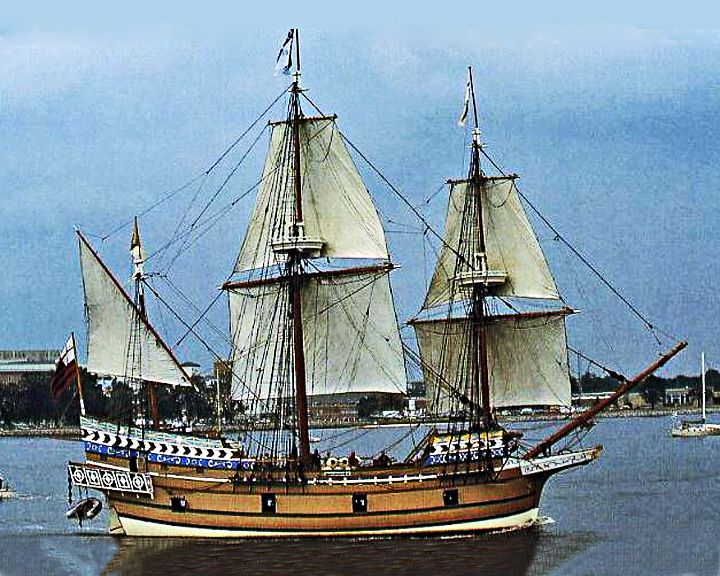 Susan Constant — British fully-rigged ship The largest of three ships of the English Virginia Company sailing to establish the new Colony of Virginia, Jamestown. Replicas of Susan Constant, shown in image, and her sister-ships are docked in the James River at Jamestown Settlement. LAUNCHED: 1607 → FATE: After 1615, fate unknown. |
|
Page 6
|
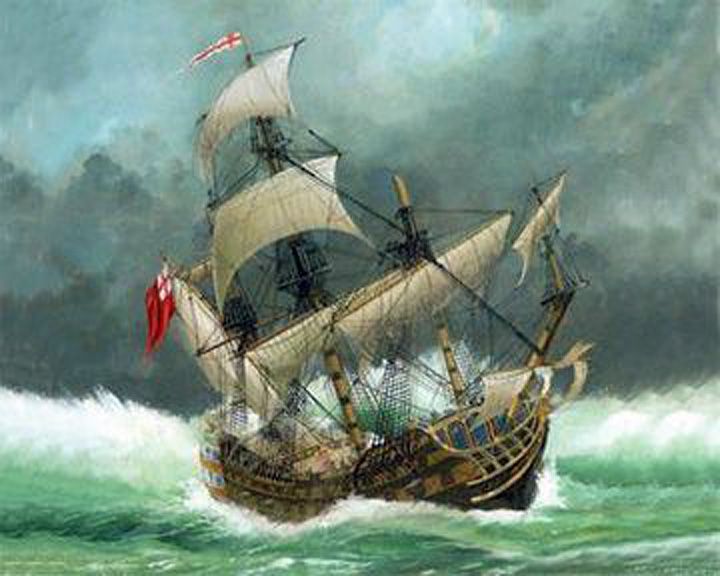 Sussex, HMS — English ship of the line, third-rate One of the most valuable wrecks ever with possibly 10 tons of gold coins and other valuables on board. Besides Sussex, 12 other ships of her flotilla sank with about 1,200 casualties making the disaster one of the worst in Royal Navy history. LAUNCHED: 1693, April 18 → FATE: Sank in a violent storm near the Strait of Gibraltar February 27, 1694. |
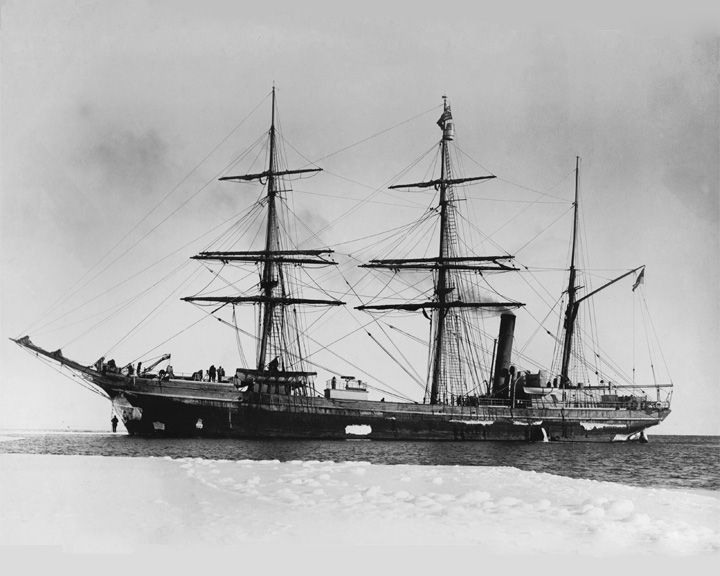 Terra Nova — British wooden-hulled barque Serving in the British Antarctic Expedition 1910, best remembered for the death of Captain Scott and four companions. She was built for the Dundee whaling and sealing fleet, working 10 years in the annual seal fishery in the Labrador Sea. LAUNCHED: 1884 → FATE: Sank off the southwestern tip of Greenland September 13, 1943. |
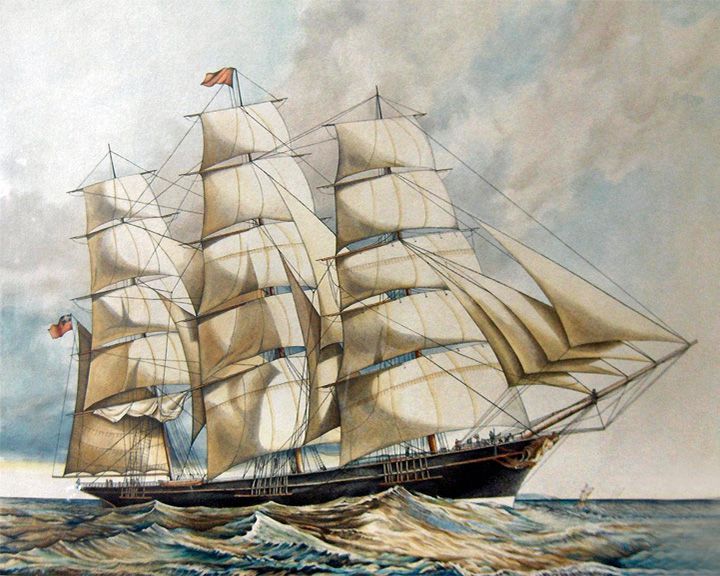 Thermopylae — English extreme clipper Raced the clipper Cutty Sark from Shanghai back to London and won by seven days. In 1897, she was sold to Portugal and renamed Pedro Nunes for used as a naval training ship. LAUNCHED: 1868, August → FATE: Sunk as target practice by the Portuguese Navy, October 13, 1907. |
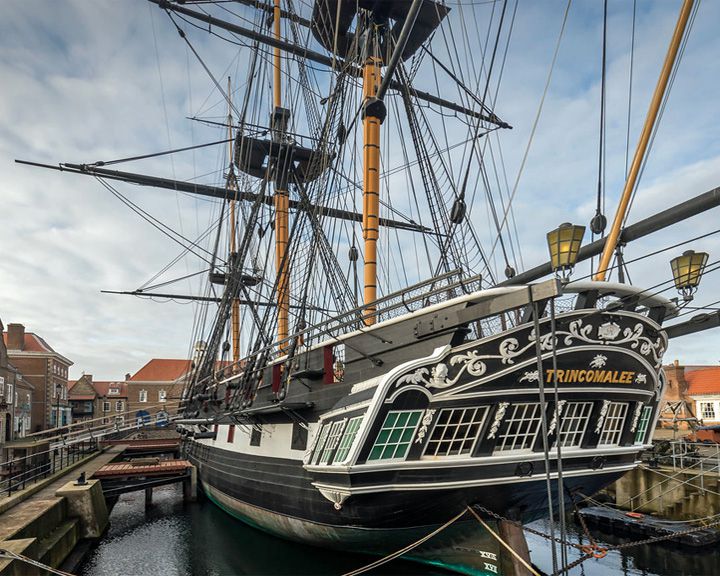 Trincomalee, HMS — British Leda-class frigate One of two surviving British frigates of her era. Holds the distinction of being the oldest British warship still afloat. LAUNCHED: 1817, October 12 → FATE: Restored made the centerpiece museum ship in Hartlepool, England. |
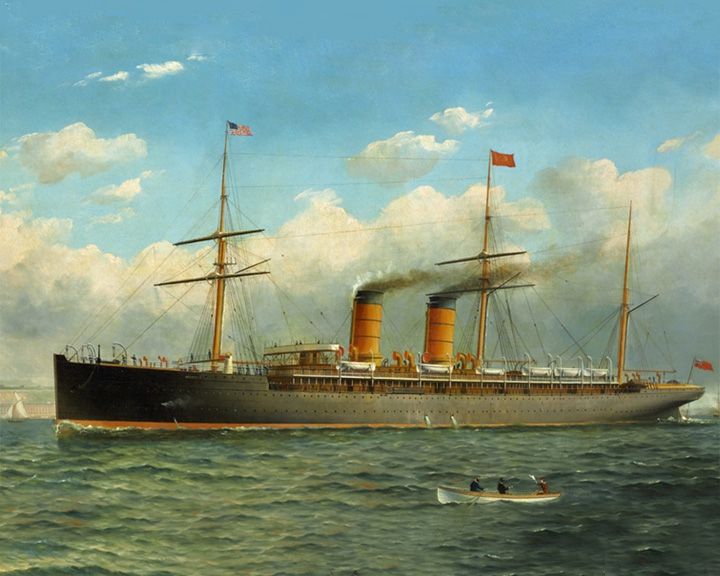 Umbria, RMS — British ocean liner With her sister ship, Etruria, the last two transatlantic ocean liners fitted with auxiliary sails. In May of 1903, the Mafia tried to blow her up but failed. LAUNCHED: 1884, June 18 → FATE: Scrapped in 1910. |
 (Another (Another Unicorn — British three-masted sailing ship Royal Navy vessel appearing in the comics series by Belgian cartoonist Hergé The Adventures of Tintin, and the movie. She is the setting of a battle between pirates and sailors, then scuttled, and discovered years later by the boy Tintin and his friends. LAUNCHED: 1943, first appeared in print; movie release in 2011 → FATE: Inconclusive. |
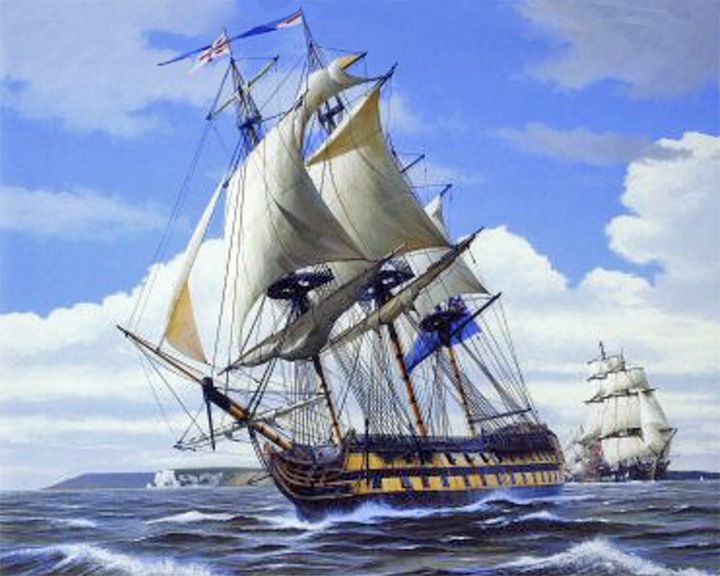 Vanguard, HMS — English ship of the line, 74-gun third-rate The flag ship of Horatio Nelson at the Battle of the Nile, 1798. Prince Alberto of Naples and Sicily, part of a royal entourage on board fleeing from Naples and the French, died on board. LAUNCHED: 1787, March 18 → FATE: Broken up in 1821. |
 Victory, HMS — English first-rate ship of the line (Galleon) Lord Nelson's flagship at the Battle of Trafalgar in 1805. She was refitted and repainted in 1800-1803, almost broken up in 1831, fitted up as a Naval School 1889, retired in 1904, and eventually restored. LAUNCHED: 1765, May 18 → FATE: Being restored at the HMNB, Portsmouth, England. |
|
Page 7
|
 Warrior, HMS — British warship First British iron-hulled, armour-plated warship. She was the largest, fastest, most heavily armed and armored warship up to that time. LAUNCHED: 1860, December 18 → FATE: Currently berthed in Portsmouth, England as a museum. |
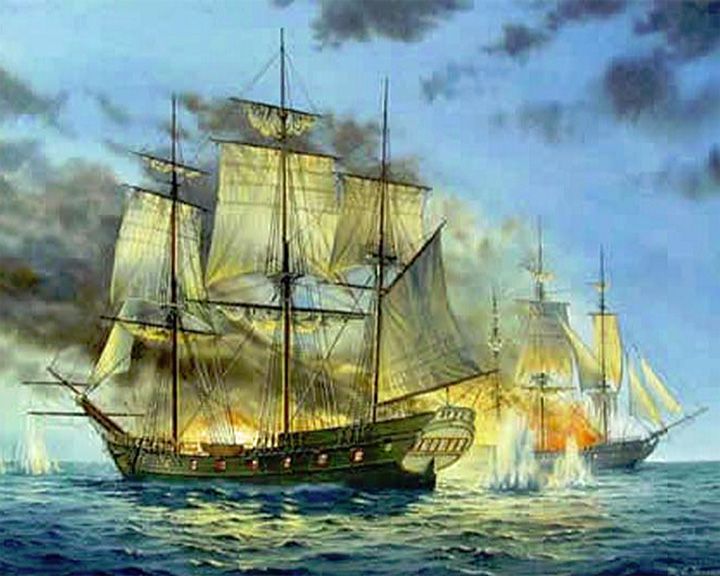 Whydah Gally — British sailing ship, square rigged three-masted Flagship of the pirate "Black Sam" Bellamy. The wreck was found in 1984. Artifacts from the wreck are on display at The Whydah Pirate Museum in Provincetown, Massachusetts. LAUNCHED: 1715 → FATE: Sank in a violent storm April 26, 1717. |
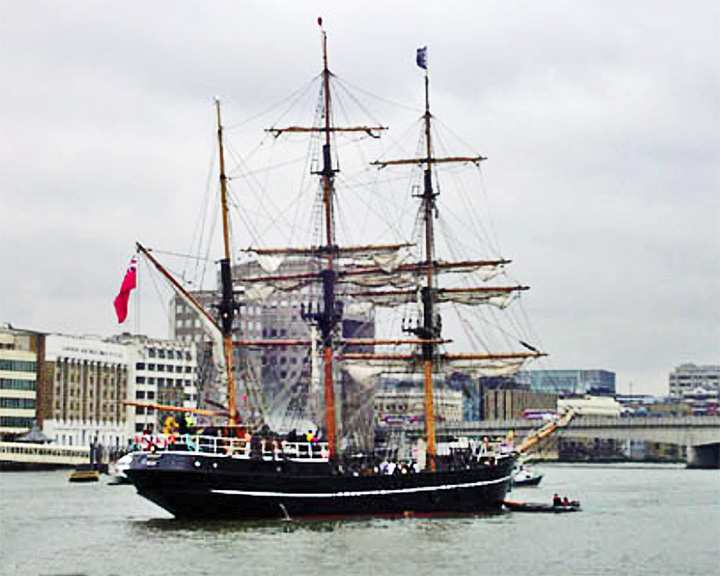 Zong — British square rigger slave ship Infamous for the 1781 massacre of 132 sick and dying slaves thrown overboard so the ship's owners could collect on their cargo insurance. The Zong had been a Dutch vessel the Zorgue seized by the British in 1781 off West Africa, along with 244 Africans on board. LAUNCHED: 1776, or ealier → FATE: Unknown. |
The number of British/English Ships with Sails listed is 50 The contents of this page are available under the Creative Commons Attribution-Share Alike 3.0 Unported license and the GNU Free Documentation License (GFDL). |
|
|
First Ship on each page
| |
| Page | Ship Name (Country and Type) |
| 1. | Association, HMS (British second-rate ship of the line) |
| 2. | City of Adelaide (English clipper ship) |
| 3. | Golden Hind (English galleon) |
| 4. | Kathleen and May (British three masted schooner) |
| 5. | President, SS (British paddle steamship) |
| 6. | Sussex, HMS (English ship of the line) |
| 7. | Warrior, HMS (British warship) |
British/English | |
| 1. | Association, HMS British second-rate ship of the line |
| 2. | Beagle, HMS English sloop |
| 3. | Birkenhead, HMS British frigate |
| 4. | Bounty, HMS English collier |
| 5. | Challenger, HMS British corvette |
| 6. | Champion of the Seas English clipper ship |
| 7. | City of Adelaide English clipper ship |
| 8. | Colossus, HMS British third-rate ship of the line |
| 9. | Cutty Sark English clipper ship |
| 10. | Discovery British barque |
| 11. | Driver, HMS British paddle sloop |
| 12. | Endeavour, HMS British collier |
| 13. | Etoile du Roy British frigate |
| 14. | Gaspée English single-masted sloop-of-war |
| 15. | Golden Hind English galleon |
| 16. | Golden Hinde English galleon |
| 17. | Great Britain, SS British steamship |
| 18. | Great Eastern, SS British iron paddle steamboat |
| 19. | Great Western, SS British paddle steamboat |
| 20. | Hermione, HMS British frigate |
| 21. | Hotspur, HMS British sloop-of-war |
| 22. | Investigator, HMS British collier |
| 23. | Kathleen and May British three masted schooner |
| 24. | Lady Elizabeth British 3-masted iron barque |
| 25. | Mary Rose English carrack-type |
| 26. | Maryland Dove American merchant vessel |
| 27. | Matthew English caravel |
| 28. | Mayflower English galleon |
| 29. | Merchant Royal English merchant ship |
| 30. | Nemesis British steam and sail powered warship |
| 31. | President, SS British paddle steamship |
| 32. | Queen Anne's Revenge English sloop |
| 33. | Resolution, HMS British Collier |
| 34. | Royal Charles, HMS British first-rate three-decker ship of the line |
| 35. | Royal George, HMS English first-rate ship of the line |
| 36. | Sea Venture English merchant ship |
| 37. | Sovereign of the Seas, HMS English full-rigged |
| 38. | Susan Constant British fully-rigged ship |
| 39. | Sussex, HMS English ship of the line |
| 40. | Terra Nova British wooden-hulled barque |
| 41. | Thermopylae English extreme clipper |
| 42. | Trincomalee, HMS British Leda-class frigate |
| 43. | Umbria, RMS British ocean liner |
| 44. | Unicorn British three-masted sailing ship |
| 45. | Vanguard, HMS English ship of the line |
| 46. | Victory, HMS English first-rate |
| 47. | Warrior, HMS British warship |
| 48. | Whydah Gally British sailing ship |
| 49. | Zong British square rigger |
|
About the Data There are more than 400 ships in this database, but the initial list is only for famous ships names that begin with letters "A-B". For other listings, use the country and type tabs. Touching (or cursor over) a ship image produces an enlargement. Touch anywhere else (or move the cursor off the image) to close the larger image. Touching (or clicking on) any underlined name will link to a page with more information. Although submarines are usually called boats, they are grouped with ships here. Most of the information comes from Wikipedia. |
^
Other Pages in Names Galore: | |
Famous Cowboy Names Sports Team Names Other Name Lists | Name Generators Naming Fun Stories about Names |